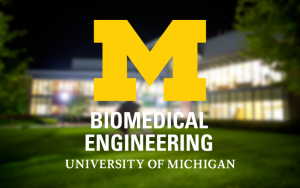
The Effects of Mechanical Forces on Human Embryonic Stem Cell Behavior
The development of an organism from a zygote into a fully functional 3D individual is a process in which a strong coupling of morphogens and mechanical forces is coordinated with embryo shape. During development, cells communicate with each other through cell-cell junctions and with their microenvironment via mechanical cues to regulate cell fate, re-organize the extracellular matrix, and guide developmental process. Most studies on human embryonic stem cells (hESCs) focused on how external soluble factors including growth factors and small inhibitors, gene and protein expression, and signaling pathways to maintain stemness or initiate differentiation of these cells. A various array of environmental factors including the effect of geometry and mechanical properties of extracellular matrix on stem cells contributes to altering stem cell fate. Recently, increasing evidence has revealed the importance of mechanical factors in affecting migration, proliferation and stem cell differentiation in vitro.
In this dissertation, we focus on the development and application of novel bioengineering approaches to understand the effects of mechanical forces on hESC behaviors and the directed differentiation of hESCs. Specifically, by employing a microfluidic device to induce controlled and regulated forces that apply global mechanical forces to adherent hESCs, we find that uniaxial substrate stretching disrupts the pluripotency circuit and initiates the exit of transcription factors, Nanog and Oct4, from the nucleus into the cytoplasm via a nuclear export protein (CRM1) as early as 30 min after stretch application and for 2 hours on a flexible substrate coated with Matrigel, and is not reliant on exogenous soluble factors. In order to pinpoint to the receptors responsible for mechanical sensing, we employ a novel technique, acoustic tweezing cytometery (ATC), that utilizes ultrasound pulses to actuate functionalized microbubbles targeted to integrin in order to apply cyclic strain to hESCs. We find that ATC-mediated cyclic forces applied for 30 min induced immediate global responses in the colony, including increased contractile force, enhanced calcium activity, as well as decreased nuclear expression of pluripotency transcription factors Oct4 and Nanog, leading to rapid differentiation and characteristic epithelial-mesenchymal transition (EMT) events that depend on focal adhesion kinase activation and cytoskeleton tension. These results reveal a unique, rapid mechanoresponsiveness and community behavior of hESCs to integrin-targeted cyclic forces. Furthermore, we demonstrate an integrative mechanotransduction that induced neural rosette formation of hESCs via the application of ATC and induction medium. We observe upregulation of Pax6 and Sox1 in as early as 6 hours, following by neural rosettes formation in 48 hours, which is much faster compared to the typical 10-15 days needed with conventional neural rosettes formation protocols.
Together, this dissertation presents novel findings and insights regarding the effects of external mechanical forces on hESCs. Such information may help elucidate the mechanobiology of hESCs, and thus advance our knowledge of human embryogenesis, regenerative medicine, and tissue engineering.
The development of an organism from a zygote into a fully functional 3D individual is a process in which a strong coupling of morphogens and mechanical forces is coordinated with embryo shape. During development, cells communicate with each other through cell-cell junctions and with their microenvironment via mechanical cues to regulate cell fate, re-organize the extracellular matrix, and guide developmental process. Most studies on human embryonic stem cells (hESCs) focused on how external soluble factors including growth factors and small inhibitors, gene and protein expression, and signaling pathways to maintain stemness or initiate differentiation of these cells. A various array of environmental factors including the effect of geometry and mechanical properties of extracellular matrix on stem cells contributes to altering stem cell fate. Recently, increasing evidence has revealed the importance of mechanical factors in affecting migration, proliferation and stem cell differentiation in vitro.
In this dissertation, we focus on the development and application of novel bioengineering approaches to understand the effects of mechanical forces on hESC behaviors and the directed differentiation of hESCs. Specifically, by employing a microfluidic device to induce controlled and regulated forces that apply global mechanical forces to adherent hESCs, we find that uniaxial substrate stretching disrupts the pluripotency circuit and initiates the exit of transcription factors, Nanog and Oct4, from the nucleus into the cytoplasm via a nuclear export protein (CRM1) as early as 30 min after stretch application and for 2 hours on a flexible substrate coated with Matrigel, and is not reliant on exogenous soluble factors. In order to pinpoint to the receptors responsible for mechanical sensing, we employ a novel technique, acoustic tweezing cytometery (ATC), that utilizes ultrasound pulses to actuate functionalized microbubbles targeted to integrin in order to apply cyclic strain to hESCs. We find that ATC-mediated cyclic forces applied for 30 min induced immediate global responses in the colony, including increased contractile force, enhanced calcium activity, as well as decreased nuclear expression of pluripotency transcription factors Oct4 and Nanog, leading to rapid differentiation and characteristic epithelial-mesenchymal transition (EMT) events that depend on focal adhesion kinase activation and cytoskeleton tension. These results reveal a unique, rapid mechanoresponsiveness and community behavior of hESCs to integrin-targeted cyclic forces. Furthermore, we demonstrate an integrative mechanotransduction that induced neural rosette formation of hESCs via the application of ATC and induction medium. We observe upregulation of Pax6 and Sox1 in as early as 6 hours, following by neural rosettes formation in 48 hours, which is much faster compared to the typical 10-15 days needed with conventional neural rosettes formation protocols.
Together, this dissertation presents novel findings and insights regarding the effects of external mechanical forces on hESCs. Such information may help elucidate the mechanobiology of hESCs, and thus advance our knowledge of human embryogenesis, regenerative medicine, and tissue engineering.